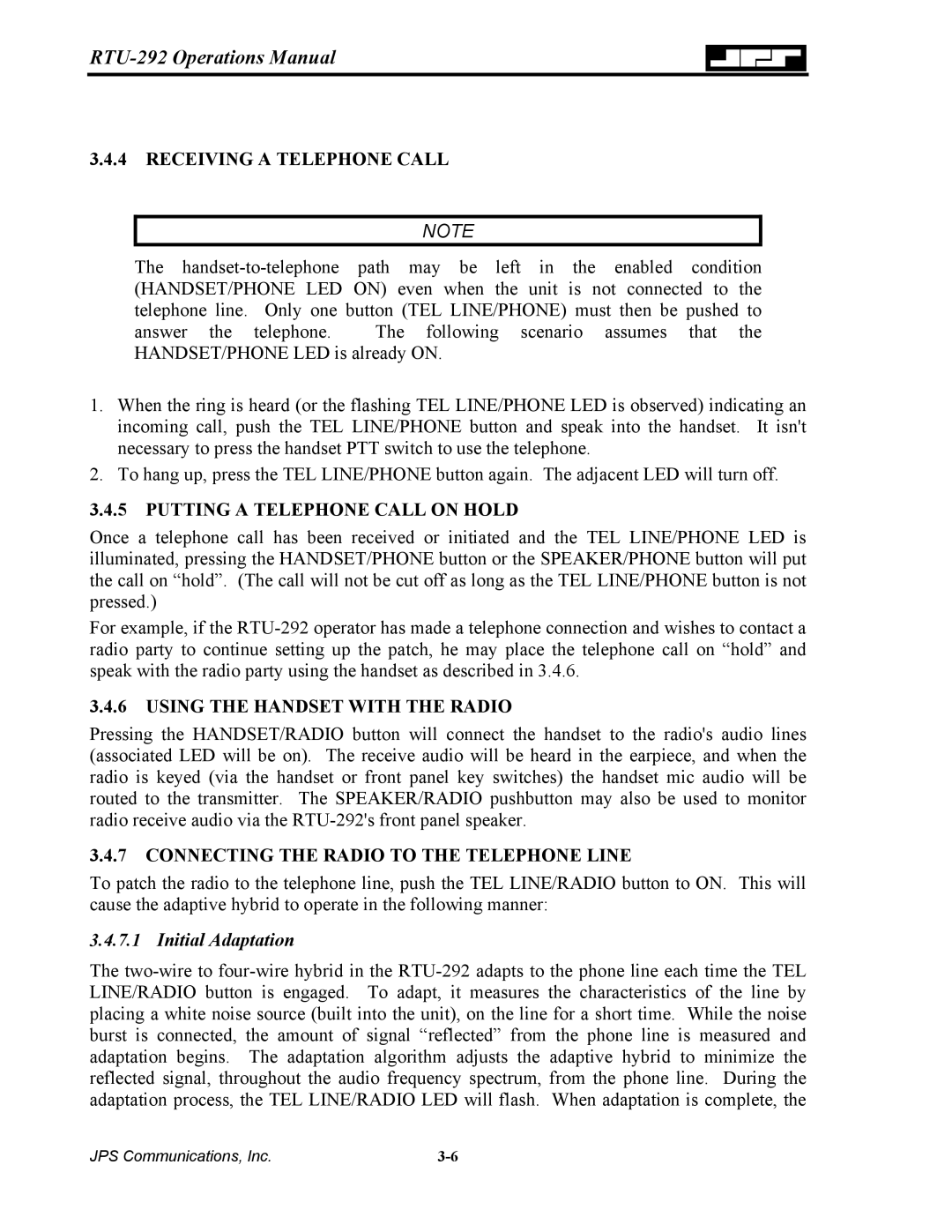
3.4.4RECEIVING A TELEPHONE CALL
NOTE
The
answer the telephone. The following scenario assumes that the HANDSET/PHONE LED is already ON.
1.When the ring is heard (or the flashing TEL LINE/PHONE LED is observed) indicating an incoming call, push the TEL LINE/PHONE button and speak into the handset. It isn't necessary to press the handset PTT switch to use the telephone.
2.To hang up, press the TEL LINE/PHONE button again. The adjacent LED will turn off.
3.4.5 PUTTING A TELEPHONE CALL ON HOLD
Once a telephone call has been received or initiated and the TEL LINE/PHONE LED is illuminated, pressing the HANDSET/PHONE button or the SPEAKER/PHONE button will put the call on “hold”. (The call will not be cut off as long as the TEL LINE/PHONE button is not pressed.)
For example, if the
3.4.6USING THE HANDSET WITH THE RADIO
Pressing the HANDSET/RADIO button will connect the handset to the radio's audio lines (associated LED will be on). The receive audio will be heard in the earpiece, and when the radio is keyed (via the handset or front panel key switches) the handset mic audio will be routed to the transmitter. The SPEAKER/RADIO pushbutton may also be used to monitor radio receive audio via the
3.4.7 CONNECTING THE RADIO TO THE TELEPHONE LINE
To patch the radio to the telephone line, push the TEL LINE/RADIO button to ON. This will cause the adaptive hybrid to operate in the following manner:
3.4.7.1 Initial Adaptation
The
JPS Communications, Inc. |
